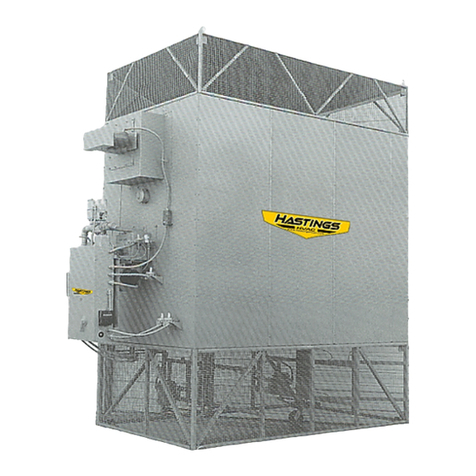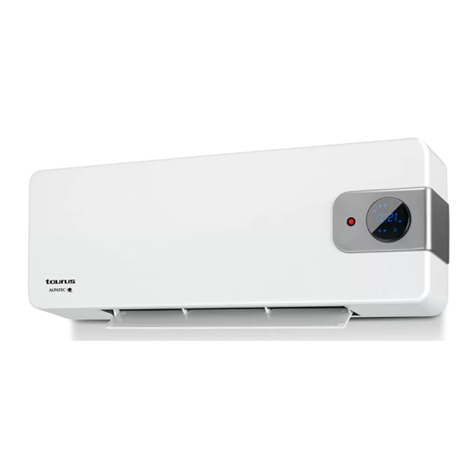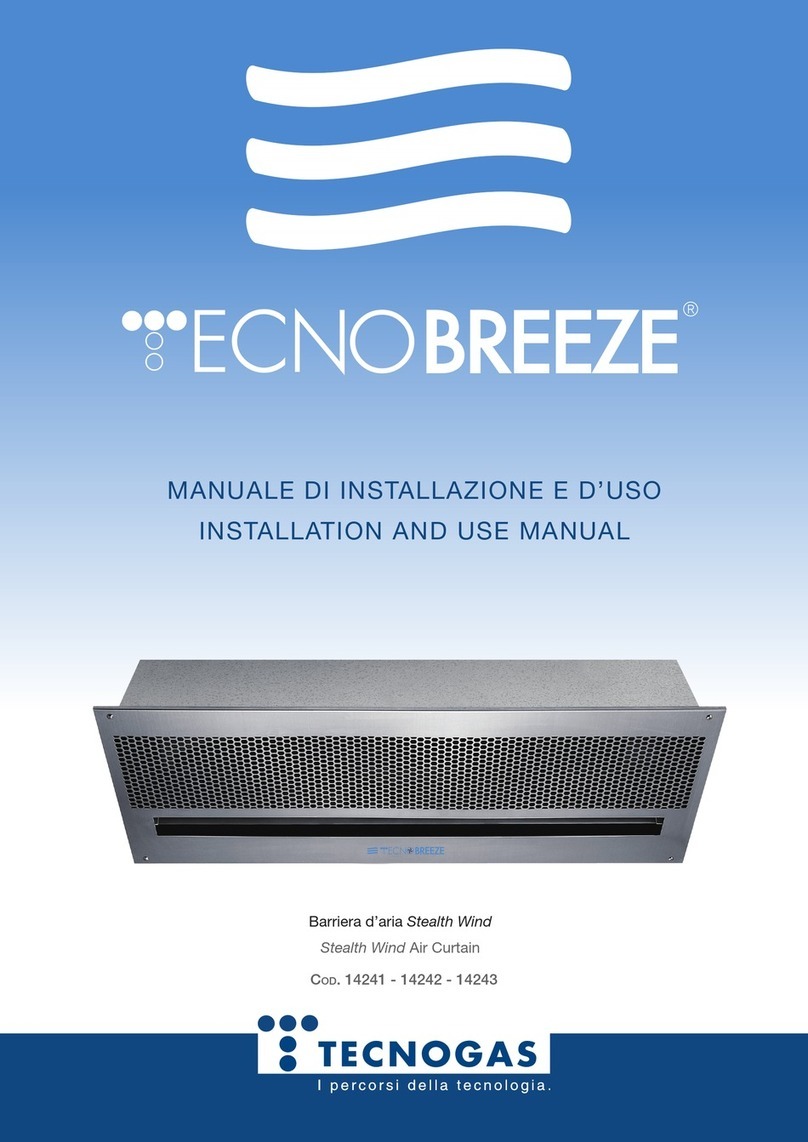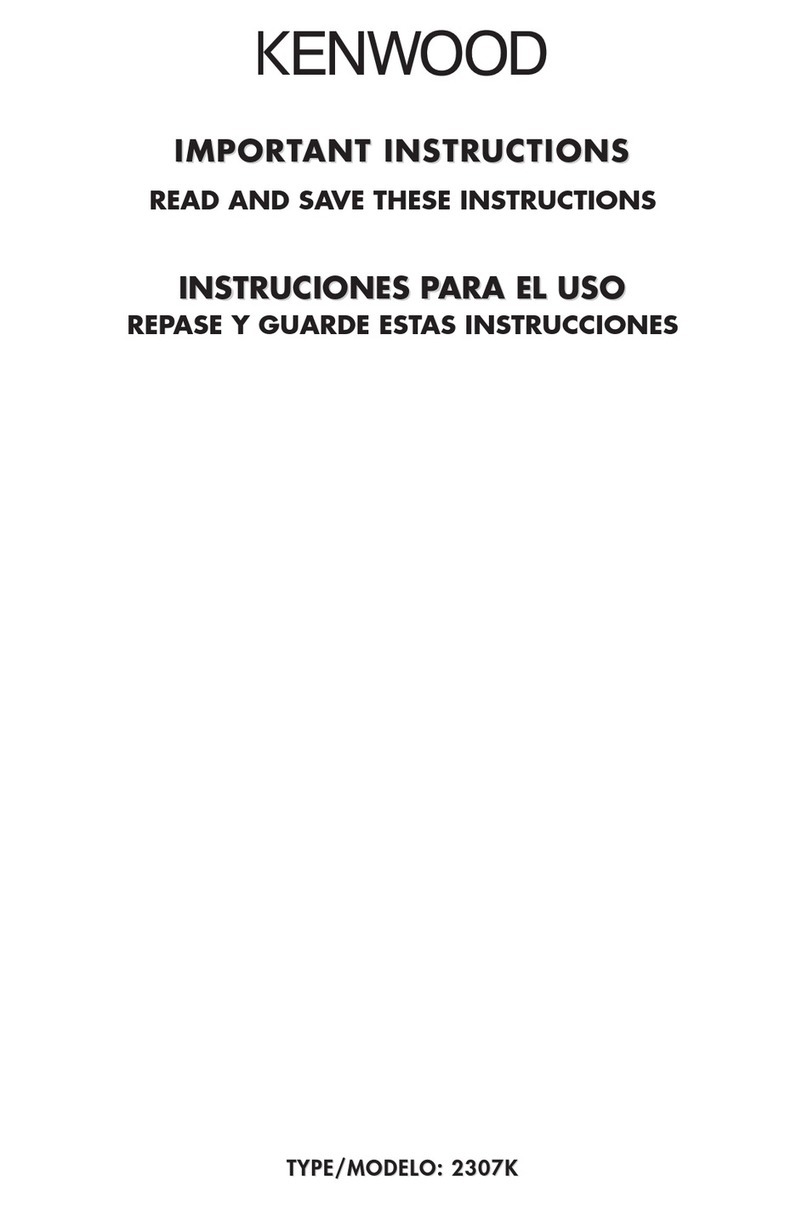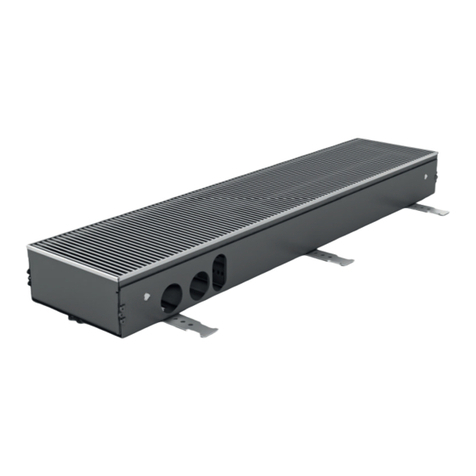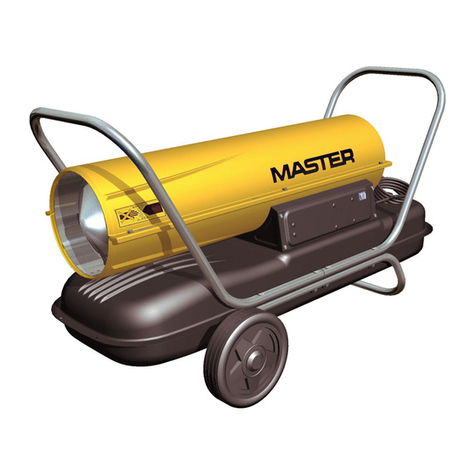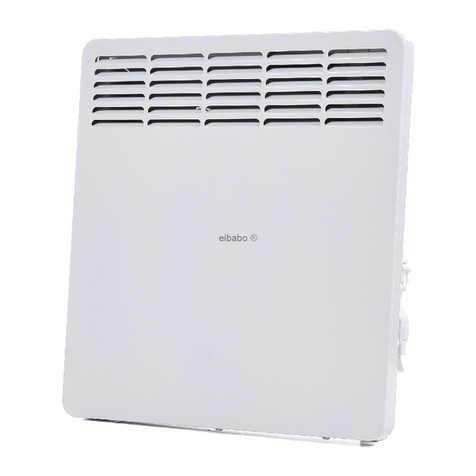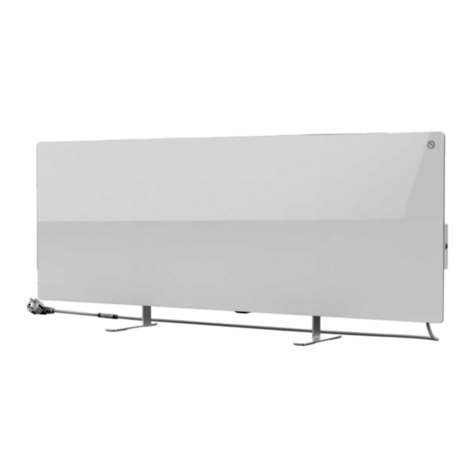Hastings COUNTERFLO CF SERIES Manual

ISCF-1
April 2003
Supersedes
October 2000
Installation and Service Manual
COUNTERFLO
CF SERIES HEATERS
GAS, OIL, GAS/OIL FIRING
WARNING
FOR YOUR SAFETY
The use and storage of gasoline or other flammable vapors
and liquids in open containers in the vicinity of this appliance
is hazardous.
Notice
Read These Instructions Before Installation


TABLE OF CONTENTS
Section I. – General Information. . . . . . . . . . . . . . . . . . . . . . . . . . . . . . . . . . . . . . . . . . . . 1
A. Purpose . . . . . . . . . . . . . . . . . . . . . . . . . . . . . . . . . . . . . . . . . . . . . . . . . . . . . . . . . 1
B. Shipping. . . . . . . . . . . . . . . . . . . . . . . . . . . . . . . . . . . . . . . . . . . . . . . . . . . . . . . . . 1
C. Optional Factory Service . . . . . . . . . . . . . . . . . . . . . . . . . . . . . . . . . . . . . . . . . . . . . 1
D. Equipment Description . . . . . . . . . . . . . . . . . . . . . . . . . . . . . . . . . . . . . . . . . . . . . . . 2
Section II. – Installation Procedure . . . . . . . . . . . . . . . . . . . . . . . . . . . . . . . . . . . . . . . . . . 4
A. Handling the Equipment . . . . . . . . . . . . . . . . . . . . . . . . . . . . . . . . . . . . . . . . . . . . . 4
B. Positioning the Heater . . . . . . . . . . . . . . . . . . . . . . . . . . . . . . . . . . . . . . . . . . . . . . 4
C. Combustion Air Openings . . . . . . . . . . . . . . . . . . . . . . . . . . . . . . . . . . . . . . . . . . . . 5
D. Location of Accessories . . . . . . . . . . . . . . . . . . . . . . . . . . . . . . . . . . . . . . . . . . . . 7
E. Electrical Connections . . . . . . . . . . . . . . . . . . . . . . . . . . . . . . . . . . . . . . . . . . . . . . 7
F. Piping Connections . . . . . . . . . . . . . . . . . . . . . . . . . . . . . . . . . . . . . . . . . . . . . . . . . 7
G. Exhaust Duct Connection . . . . . . . . . . . . . . . . . . . . . . . . . . . . . . . . . . . . . . . . . . . .13
H. Optional Remote Control Panel Installation . . . . . . . . . . . . . . . . . . . . . . . . . . . . . . . . 13
Section III. – Pre-Start Inspection . . . . . . . . . . . . . . . . . . . . . . . . . . . . . . . . . . . . . . . . . .13
A. Procedure . . . . . . . . . . . . . . . . . . . . . . . . . . . . . . . . . . . . . . . . . . . . . . . . . . . . . . .13
Section IV. – Start-Up . . . . . . . . . . . . . . . . . . . . . . . . . . . . . . . . . . . . . . . . . . . . . . . . . .16
A. Procedure . . . . . . . . . . . . . . . . . . . . . . . . . . . . . . . . . . . . . . . . . . . . . . . . . . . . . . .16
Section V. – Maintenance Schedule and Lubrication Requirements. . . . . . . . . . . . . . . . . . . 23
A. Maintenance Schedule . . . . . . . . . . . . . . . . . . . . . . . . . . . . . . . . . . . . . . . . . . . . . 23
B. Lubrication Instructions . . . . . . . . . . . . . . . . . . . . . . . . . . . . . . . . . . . . . . . . . . . . 24
C. Testing of Controls & Safety Devices . . . . . . . . . . . . . . . . . . . . . . . . . . . . . . . . . . . 25
Section VI. – Troubleshooting . . . . . . . . . . . . . . . . . . . . . . . . . . . . . . . . . . . . . . . . . . . 26
A. Troubleshooting Gas-Fired Units . . . . . . . . . . . . . . . . . . . . . . . . . . . . . . . . . . . . . . 26
B. Troubleshooting Oil-Fired Units . . . . . . . . . . . . . . . . . . . . . . . . . . . . . . . . . . . . . . . . 27
C. Webster Electric Two-Stage Fuel Pump for Oil-Fired Units . . . . . . . . . . . . . . . . . . . . . .27
D. Sundstrand Fuel Pump for Oil-Fired Units . . . . . . . . . . . . . . . . . . . . . . . . . . . . . . . . .27
E. General Troubleshooting Tips . . . . . . . . . . . . . . . . . . . . . . . . . . . . . . . . . . . . . . . . 29
-i-

SECTION I. – GENERAL INFORMATION
A. PURPOSE
The purpose of this manual is to present a guide for proper installation, maintenance, and
operation of the Counterflo CF Series heaters, and to supplement, but not to replace, the
services of qualified field service personnel to supervise the initial start-up and adjustment of
the Counterflo unit. Persons without previous experience with large commercial and
industrial equipment should not attempt the initial adjustment and checkout procedure which
is essential before such installations may be considered as ready for operation. This manual
should be made readily available to operating personnel as an aid in trouble-shooting and
proper maintenance.
B. SHIPPING
Base Counterflo units are shipped with blower and burner sections assembled. Discharge air
nozzles and/or discharge hoods, optional filter and/or damper sections, or other large
optional accessories are assembled and shipped mounted and wired whenever possible
within limitations of shipping and handling. Optional accessories shipped separately are
shipped as assembled sections. Any wired accessories which have been disassembled for
separate shipment require no additional conduit or wire for field reassembly. All wire leads
will be tagged for ease of reconnection in the field.
Shipments are made F.O.B. Hastings, Nebraska, by rail or truck. In either case, the unit is
securely strapped, tied, and blocked to prevent shipping damage. All shipments are checked
by an inspector before they are accepted by the carrier. Parts that are shipped unmounted
are noted on the bill of material. These parts, where feasible, are packaged and shipped
with the units. Upon receipt of shipment, all units should be checked against the bill of
lading to insure all items have been received. The units should be checked carefully for
physical damage in the presence of the carrier’s representative. If parts are missing or
damage has occurred, a claim should be filed immediately with the carrier.
All Counterflo units are given a complete operations test and control circuit checkout before
shipment. A copy of the flame test report, wiring diagram, and bill of material is included
with each unit shipped. If correspondence with the factory is necessary, please provide the
unit model and serial number.
C. OPTIONAL FACTORY SERVICE
Periodic service on any piece of mechanical equipment is necessary for efficient operation.
Hastings HVAC, Inc. has a nationwide service organization available to make quick and
dependable servicing of make-up air, return air, heating, ventilating, or air handling types of
equipment. Hastings HVAC, Inc. also provides factory start-up service which includes the
presence of a service engineer to perform the initial start-up and adjustment of the
equipment, instruction of the owner’s maintenance personnel in proper operation and
maintenance, and return calls for any adjustments required to a particular unit within a
period of sixty (60) days after start-up is complete. Customer’s loss of power of fuel will
not constitute need for any return calls. Consult the factory for quotations on periodic or
start-up service. -1-

D. EQUIPMENT DESCRIPTION
The Counterflo heater is a rugged industrial grade space heater. Models are available for
vertical upright mounting indoors, or outdoors, and horizontal mounting for indoor floors,
ceiling suspension or rooftops.
1. Cabinet and Frame
Rugged channel iron frame and all cabinet surfaces are painted with heat and corrosion
resistant industrial enamel. Standard unit includes three side return air screens. Burner
end has a closure plate for motor access.
2. Blowers
Depending on heater size, there are two or three centrifugal, double width, double inlet,
forward curved, class I industrial fans mounted on a one-piece shaft with self-aligning
200,000 hour prelubricated ball bearings. Blower wheels are statically and dynamically
balanced. Fixed drives are standard on all units. An energy efficient open dripproof ball
bearing squirrel cage induction T-frame motor is provided as standard for all voltages.
3. Burners
Standard burner is On-Off.
Gas (G) – Power type with pilot spark ignition and main burner pilot ignition for use with
natural, manufactured, mixed, liquefied petroleum gas or liquefied gas/air mixture.
Included in the manifold are main gas electric shut-off valve with linkage to combustion
air damper, main and pilot gas pressure regulators for maximum inlet pressure of 2 PSIG,
pilot gas-air mixer and pilot solenoid valve. Mininum standard entering gas pressure is 4
ounces.
Light Oil (LO) -- High pressure oil atomizing type with mechanically forced draft suitable
for burning fuels through #2 grade to a maximum of 40 SUS at 100°F. The unit
incorporates an oil pump, combustion air fan and drive, combustion air damper operator,
oil solenoid valve, oil filter and pressure gauge. An oil pressure regulator or oil safety
valve is supplied with a pressure system.
4. Fuel and Electric Controls
Standard components for Counterflo Series heaters include a Nema 1 control box with
electronic flame safeguard system and ignition transformer, motor starter, control
transformer, high temperature limit switch, air flow switch, and an oil or gas electrical
control system.
-2-

5. Control System
The standard On-Off control system is obtained with a single pole, single throw
thermostat that closes upon a temperature drop below setpoint. Fan operation is
intermittent. A detailed sequence of operation for standard gas-fired heaters is provided
later in this manual. Thermostat is factory furnished for field mounting and wiring.
The optional control system for Hi-Lo-Off burner operation is obtained with a two-stage
thermostat that closes in sequence on a temperature drop below setpoint. Fan operation
is intermittent. The thermostat is factory furnished for field mounting and wiring.
The optional modulating control system has an On-Off thermostat as described above
plus a modulating thermostat to control a modulating butterfly fuel valve. Fan operation
is intermittent. Thermostats are factory furnished for field mounting and wiring.
6. Remote Control Panel (Optional)
The optional panel is furnished with a heavy duty toggle switch and three 115 volt signal
lights as depicted in Figure 8. The switch controls the blower and the burner. The signal
lights indicate supply blower operation (white light marked “blower”), burner operation
(amber light marked “heating”), and safety lockout (red light marked “lockout”). Remote
control panel lids are 16 gauge brushed stainless steel. Wiring box dimensions are 8” x
5” x 3-1/2” deep. All wiring is 14 AWG 16/30 stranded 105°thermoplastic or
equivalent, color coded per corresponding wiring diagrams.
-3-

SECTION II. – INSTALLATION PROCEDURE
This equipment shall be installed and wired in accordance with regulations of the National
Board of Fire Underwriters, National Electric Code, and local governing bodies. The
following recommendations are not intended to supplant any requirements of federal,
state, or local codes having jurisdiction. Authorities having jurisdiction should be con-
sulted before installations are made. Local codes may require additional safety controls
and/or interlocks.
A. HANDLING THE EQUIPMENT
The Counterflo heater has been designed for rigging and handling through the use of
special lifting lug hooks installed on the sides of the unit. As explained previously, the
standard unit is designed for shipping in one piece. Optional accessories must be field
mounted. Figure 1 depicts a typical Counterflo heater for vertical floor mounting.
When unloading and setting the heater, use the lifting lugs provided or move the heater
on rollers. Hooks, jacks, or chains must not be used around the casing, exhaust fan, or
main control panel.
To be properly set, the Counterflo heater should be placed on a solid foundation and set
exactly as detailed later.
During transit, unloading, and setting of the unit, bolts and nuts may have become
loosened, particularly in the pillow block ball bearing assemblies in the fan section. It is
recommended that all nuts and set screws be tightened. Turn fan shaft by hand to make
certain that blower does not rub against blower housing, and that bearing lock rings are
tight.
Open the cover on the electrical control box located near the middle on the side of the
burner section. Box can be opened by turning main disconnect switch to the “off”
position. Inspect all wire terminals and wiring terminations to ensure that all connections
are tight.
B. POSITIONING THE HEATER
Locate the heater exactly level, making certain the minimum clearance is maintained
between the heater, and any combustible material. The Underwriters Laboratories Inc.,
listing of the heater stipulates the following clearances: 48” at the burner end, 18” at the
rear, both sides and top. The exhaust stack clearance must be 18”. See page 11 for
stack details.
For convenient access for maintenance, provide 24” clearance at the right side, as seen
when facing the burner, and 36” at the rear. Position the heater, if practical, with the left
hand side (as seen from burner end) next to any adjacent wall.
-4-

The following recommendations are not intended to supplant requirements of federal,
state or local codes having jurisdiction. All local authorities having jurisdiction should be
consulted before the installation is made. The heater should be installed in accordance
with the standard of the National Board of Fire Underwriters for the class and all wiring
connections must conform to the National Electric Code.
C. COMBUSTION AIR OPENINGS
When the heaters are installed in a separate heater room with fresh air and return air ducts
running direct to the base of the heater, or when the plant is under a high negative
pressure condition, provisions should be made for an outside source of combustion air. A
conservative rule of thumb for estimating the inlet area required is 90 square inches per
1,000,000 BTU/HR heater output. The following table lists the recommended free area of
vent opening in the outside wall for various heater sizes.
HEATER SIZE AREA OF COMBUSTION AIR CONNECTING DUCT
MODEL INTAKE OPENING – SQ.INCHES DIAMETER – INCHES
20 18 6
25 22 6
40 36 7
50 45 8
75 68 9
100 90 11
125 113 12
150 135 13
175 158 14
200 180 14
225 202 16
250 225 18
275 248 18
300 270 19
325 292 20
350 315 20
400 360 22
450 405 24
-5-

DIMENSIONS IN INCHES
CF
MODEL ABCDEFG H J KL
Qty.
of
Nozzles
Type
of
Hood/
Nozzle
40/55 88 33 52 22 50¾ 2 1 5/16 104½ 16¾ 15¼ 3II
60/85 94⅝39 ⅛61⅛22¾49⅝1½ 1 5/16 114⅛18 17 3II
100/125 98⅛44⅝70⅝21⅝51¾2 1 5/16 118⅛18 17 4II
150/175 108 55⅛91⅛25¼53 2 1 5/16 132½22½ 20 4II
200/225/250 130¾60⅛100 25½72½-15/16153¼22½ 20 4II
275/300/325 134 67⅝142½29⅛88 1⅜2 -11/16 1-1/16 164-11/16 29-5/16 29½ 4 III
350/400/450 134 80 164 29⅛88 1⅜2 -11/16 1-1/16 164-11/16 29-5/16 29½ 5 III
Figure 1 – Typical Counterflo Heater for Vertical Upright Mounting
-6-

Locate the Counterflo heater exactly level. Special attention should be given to the
exhaust duct connections, electrical power and control hookup points, and fuel
connection points. This information should be cross-checked with the position of support
beams and stand pipes to insure that clearance dimensions coincide with those of the
unit.
D. LOCATION OF ACCESSORIES
Where applicable, standard or optional accessories will be placed inside the fan section of
the unit for shipment, and must be removed and installed by the mechanical or electrical
contractor.
E. ELECTRICAL CONNECTIONS
All wiring must comply with all applicable local, state, provincial, and national electric
codes. Since shipment of unit may require disassembly after factory flame test,
reconnection of some electrical devices will be required in the field. Connect electrical
wires (supplied in factory furnished conduit) to appropriate terminals. All leads are tagged
to facilitate rewiring in the field. See wiring diagram provided with equipment. Complete
all wiring to any optional accessories as shown on unit bill of material and electrical wiring
diagram as required before applying voltage to the unit.
The total amperage of the main disconnect switch, blower motor, and control circuit
transformer fusing is affected by the addition of 25% to the full load amps as required by
the National Electric Code.
Check the supply voltage before energizing the unit. The maximum voltage variations
should not exceed ±10%. Phase voltage unbalance must not exceed 2%.
F. PIPING CONNECTIONS
All gas and/or oil piping connections are not shown in this manual because of the many
manifold arrangements available due to approval code requirements and different types of
modulation. All piping must comply with “Standards of National Board of Fire
Underwriters” and all applicable local codes. Contact factory if exact piping dimensions are
required. Protective pipe caps are furnished on manifolds for shipment from factory; these
caps should be removed for installation.
Run correctly sized piping to unit. Install manual gas or oil hand shut-off valve, gas
pressure and/or oil pressure regulator, and oil strainer if not already installed. Please note
that gas or oil line pressure must be as shown on specification plate when unit is operating
at full input.
1. Fuel piping – Gas Models
Figure 2 presents a table of gas piping sizes for varying flow rates. A typical On-Off
gas piping manifold is shown in Figure 3. Gas burner connection will vary between 1”
-7-

and 3” depending on the Counterflo model and type of gas.
On gas systems, vent pressure regulator(s) and vent valve (if included with unit) to
outside of building. With vent pipe outside, install a proper vent cap and/or screen to
prevent entrance of foreign material and plugging.
2. Fuel Piping – Oil Models
Figure 4 depicts a typical oil piping manifold, while Figures 5 and 6 present typical oil
tank locations. Tanks should be readily accessible for filling from tank cars or trucks,
yet located near the heaters, if practical, to minimize piping problems. National Fire
Protection Association (NFPA), insurance, and local codes and standard should all be
checked carefully prior to installation.
A buried tank is preferred from the aspect of heater maintenance. Tanks installed
above ground subject the oil to variations in temperature and viscosity which may
necessitate frequent burner adjustment.
Underground tanks should be set on a firm foundation and, where necessary, securely
anchored to prevent floating. Attention should also be given to providing adequate
corrosion protection for underground tanks.
All tanks must have minimum 1-1/4” diameter vent pipe extending not more than 1”
into tanks and located at opposite end from fill line. Vents must have weatherproof
hoods and sufficient height to prevent obstruction by snow or ice. Vents for tanks
installed above ground must have flame arrestors.
All piping should be wrought iron, steel or copper with standard fittings not less than
½” iron pipe size. All fittings must be absolutely airtight. All screwed fittings should
be coated with acid-resisting pipe cement. Use swing joints for pipe connections to
buried tanks.
Size of oil line connection is 3/8” on all models. Suction and return lines must be
minimum ½” I.D. Fill lines should be 2” in diameter located at opposite end of tank
from other piping. The suction line should terminate 6” from the bottom of the tank.
If bottom of tank is above the level of the fuel pump, a hand shut-off valve should be
installed at the tank. In all cases, install a hand shut-off valve on the intake side of the
factory furnished strainer. This strainer must be installed ahead of the heater fuel
pump. Do not install a hand shut-off valve in the return line.
Model LO heaters are equipped with either a Sunstrand or Webster pump, factory set at
100# pressure. The pump is designed for a maximum lift of 15’ with a maximum
horizontal run of 100’, equivalent to 15” to 17” of vacuum.
Model HO heaters are equipped with a metering pump only. A separate pump, supplied
by the purchaser, is necessary to supply oil to the metering pump at 3# pressure.
-8-

Furnished and Installed by Others
Furnished By Factory, Installed By Others
Factory Furnished And Installed
ITEM DESCRIPTION
1 Drip Leg l
2 Main Gas High Pressure Hand Shut-Off Valve (If Required) l
3 Main Gas High Pressure Regulator (If Required) l
4 Vent Line Thru Roof To Outside Atmosphere l
5 Main Gas Hand Shut-Off Valve l
6 Main Gas Pressure Regulator l
7 Safety Shut-Off Valve l
8 Manual Leak Test Hand Valve l
9 Main Gas Burner l
10 Leak Test Petcock W/ Plugged Test Connection l
11 Pilot Gas Supply Line l
12 Pilot Gas Hand Valve l
13 Pilot Gas Pressure Regulator l
14 Pilot Gas Solenoid Valve l
15 Needle Valve (If Required) l
16 Pilot Gas Burner l
1To Natural Gas Or Propane Fuel Supply.
Figure 3 – Typical On-Off Gas Piping
For Counterflo Heaters (1/2# Inlet Pressure)
GAS FLOW CAPACITY (CFH)
Iron Pipe Size (IPS) Inches
Length of
Pipe
(Equiv. Ft.) 1 1-1/4 1-1/2 2 3 4 6 8
50
100
150
200
244 537
173 380
141 310
122 268
832 1680
588 1188
480 970
416 840
5018 8464
3549 5986
2896 4885
2509 4232
22472 41516
15894 29364
12972 23965
11238 20760
250
300
400
500
109 240
99 219
86 189
77 169
372 751
339 685
294 594
263 531
2244 3785
2047 3454
1774 2992
1587 2677
10050 18567
8170 16943
7945 14679
7108 13132
1000
1500
2000
54 119
44 97
38 84
185 375
151 306
131 265
1121 1891
915 1544
793 1338
5022 9279
4101 7577
3554 6567
Figure 2 – Gas Flow Capacity for Piping of
Different Sizes and Lengths
-9-

Furnished and Installed by Others
Furnished By Factory, Installed By Others
Factory Furnished And Installed
ITEM DESCRIPTION
1 Oil Hand Shut-Off Valve l
2 Oil Filter l
3 Oil Safety Valve l
4 Oil Pressure Gauge l
5 Burner Oil Pump l
6 Main Oil Solenoid Valve l
7 Oil Nozzle l
8 Oil Cylinder l
9 By-Pass Oil Solenoid Valve l
10 By-Pass Pressure Regulator l
11 Check Valve l
1Oil Supply From Oil Supply Pump. Pump Not Furnished By Unit Manufacturer.
2For Line Pressure Below 60 PSI Only.
3On Suction Systems, Remove Oil Safety Valve and Pipe As Shown Above.
Burner Pump By-Pass Plug Installed By Unit Manufacturer.
4 Oil Supply Pressure Must Not Exceed 3 PSI Or Pump Seals May Be Damaged.
5 100/125 PSI At Low Fire. 200/300 PSI At High Fire.
6Two Pipe Systems Only, Oil Return To Supply Tank. Burner Pump By-Pass Plug Installed By Unit
Manufacturer. On One Pipe Systems, Burner Pump By-Pass Plug Removed By Unit Manufacturer.
7High Fire Position Of Combustion Air Louver.
8On Gravity Or Pressure Systems, Four Foot Piping Distance Recommended From Center Line Of Oil Safety
Valve To Entering Side Of Burner Oil Pump.
9Oil Piping Size To Be 3/8” NPT.
Figure 4 – Typical Oil Piping Manifold for Counterflo Heaters
-10-

-11-

Figure 6 – Typical Light Oil Piping Suction
System - - Two-Pipe Method
-12-

G. EXHAUST DUCT CONNECTION
Installation of exhaust stack must comply with regulations of the National Board of Fire
Underwriters and local governing bodies.
The exhaust stack, exhaust stack connector, exhaust stack support and miscellaneous
items related to the exhaust stack are to be supplied and installed by others. Exhaust
stack located inside the building must be positive pressure vent.
Connect the exhaust stack to the heater breeching box and run stack through roof as
shown in Figure 7. Avoid use of long horizontal exhaust pipe runs; the exhauster fan has
ample capacity for venting the heater, but cannot perform satisfactorily against strong back
drafts or excessive stack resistance.
H. OPTIONAL REMOTE CONTROL PANEL INSTALLATION
1. Refer to Figure 8 for guidelines.
2. All wiring must comply with applicable electric codes.
3. Align box with spirit level.
4. If box is to be surface mounted, three (3) mounting holes in back of box are
recommended, one in each top corner and one at bottom center. If mounting holes are
to be located in side of box as shown, four (4) holes are recommended, two at top and
two at bottom.
5. If wiring box is to be recessed, install so that open edge of box will be flush with finish
wall. Install optional flush mounting wall plate. Examine wiring box and control panel
for clearance before providing conduit hole(s).
6. Control panel is furnished with components wired to coded terminal strip. Installer to
connect numbered terminal blocks on remote control panel to corresponding terminal
block(s) in master control panel on unit.
7. Use proper wire sizing practices when running wires for the remote control panel.
SECTION III. – PRE-START INSPECTION
A pre-start inspection is extremely important and should be completed with greatest attention
given to detail. This will insure against possible unit damage on start-up and will save valuable
analysis time in the event malfunctions occur on start-up and check-out.
A. PROCEDURE
1. Check to see that all factory installed pipe plugs have been removed.
2. Check supply voltage against unit voltage.
-13-

MODEL A B C D D1EE1HJKRS
40/55 4” 8” 8” 13” 13” 18” 18” 6-1/2” 3-3/4” 69 –1/4” 16” 7-3/8”
60/85 5” 10” 10” 16” 18” 22” 26” 7 5/8” 4-3/8” 72-1/16” 20” 8-5/16”
100/125 5”/6” 10”/12” 10”/12” 16”/18” 18”/20” 22”/24” 26”/28” 9-1/4” 5-1/4” 73-1/16” 20”/24” 9-1/2”
150/175 6” 12” 12” 18” 20” 24” 28” 9-11/16” 5” 80-1/4” 24” 13-9/16”
200/250 6” 12” 12” 18” 20” 24” 28” 9-11/16” 5” 23-1/8” 24” 9-5/8”
275/325 10-1/2” 16” 16” 22” 24” 28” 32’ 11-5/16” 5-5/8” 33” 37-1/4” 6-3/8”
350/450 14” 18” 18” 24” 26” 30” 34” 11-5/16” 5-5/8” 33” 48” 9-1/4”
Note: Use D1and E1for orders with FM approval.
Note: Interior flue vent must be suited for positive pressure venting.
Figure 7 – Exhaust Details for Counterflo Heaters
-14-

-15-

3. Check all electrical connections in the main control panel.
4. Check that all fuses are installed and that fuse sizing agrees with the unit bill of
material.
5. Check to see if all gas, oil, or gas/oil connections are tight and that all joints have been
properly lubricated.
6. Check positioning of flame rod (or photocell), spark electrodes, nozzles, cone, and
swirler. Make sure the combustion air fan is fastened securely to motor shaft.
7. Check for cracks in refractory around the blast tube. This inspection requires close
observation with the aid of a good flashlight. Even a tiny crack can cause a positive
pressure within the combustion chamber and result in faulty burner operation.
8. Check fan supply area to insure freedom of shaft rotation and proper belt tension.
Check to see that blowers are tight on shaft and turn freely without rubbing the blower
housing. The motor and shaft should turn readily by hand pull of the belts. Properly
adjusted belts can be easily depressed about one inch. Make sure the fan shaft pillow
block bearings are tight.
9. Check fan motor to insure that pulleys are secure and drive belts are tight.
10. Check all areas for cleanliness.
SECTION IV. – START-UP
All safety and operating controls have been checked during the factory test period; however, it
is advisable to complete a similar check when first operating the unit. Before attempting any
service work, make sure all electrical switches and manual valves are closed.
A. PROCEDURE
1. Remove any shipping blocks from:
a. Gas pressure switch(s) (if required) may have shipping screws. Remove screws if
supplied.
b. Unit programming controller may be shipped with a paper shipping block. Remove
programmer cover and remove paper shipping block – reinstall cover and adjust
manual reset.
c. The high limit should be set for 200°F. The fan control should be set at 120°F on
high and 90°F on low. Note that fan operation is intermittent.
-16-

d. Combustion air and exhaust air proving switches are factory set for 0.2” to 0.4”
W.C.
2. Open pilot gas cock and purge air from gas line through plugged tee in pilot line.
Caution: Use a lighted torch to ignite the gas as air is purged from the pilot gas line.
Do not depend on sensing the odor of gas to determine if the gas line is purged.
3. On oil systems, remove pipe plug from gauge port of oil pump (see Figures 13 and 14)
for purging air from oil system. Use a bucket to catch oil from this opening during the
purging process. A length of copper tubing will eliminate oil mess. Open manual oil
valve in the oil suction line.
4. Push reset button on unit programming controller.
5. Close main disconnect switch.
6. The On-Off burner switch on the master control panel will operate the fans.
7. All three phase motors were properly phased during factory testing. If rotation is
reversed, interrupt main power supply and interchange any two of the incoming power
leads. Reestablish power and recheck fan operation.
8. On three phase units, the starter contacts should pull in and hold quietly without
“clatter”. If they do not operate quietly, check immediately for proper line voltage.
Even temporary low voltage at start-up will cause constant operating trouble and must
be corrected before the Counterflo heater is placed in service.
9. Recheck all set screws on motor sheave and fan sheave. Check alignment of belt(s)
and pulley(s). Run blower for a few minutes and adjust motor take-up if necessary.
Motor is mounted on an adjustable base shown on Figure 9. Do not over-tighten belt(s)
since excessive tension will reduce belt life and cause excessive load on bearings.
After initial start, allow the belts a few days’ running time to become seated in pulley
grooves, then readjust as necessary. Do not roll belts over grooves or sheaves as this
will result in permanent belt damage.
10. Open manual hand valves. After manual valves have been opened, burner should ignite
automatically if thermostat is in control circuit.
11. The burner assembly for either gas or oil fired Counterflo heaters generally requires re-
adjustment of the flame test settings for proper operation under actual field conditions.
The most accurate guides to proper burner adjustment are:
a. Flame travel within the combustion chamber.
b. Temperature and CO2 content of the flue gasses.
c. Proper action of the flame sensor.
-17-
Other manuals for COUNTERFLO CF SERIES
2
Table of contents
Other Hastings Heater manuals
Popular Heater manuals by other brands

Sunpak
Sunpak S25 Installation, operation & maintenance manual

Webasto
Webasto Thermo 90 ST Service and repair manual
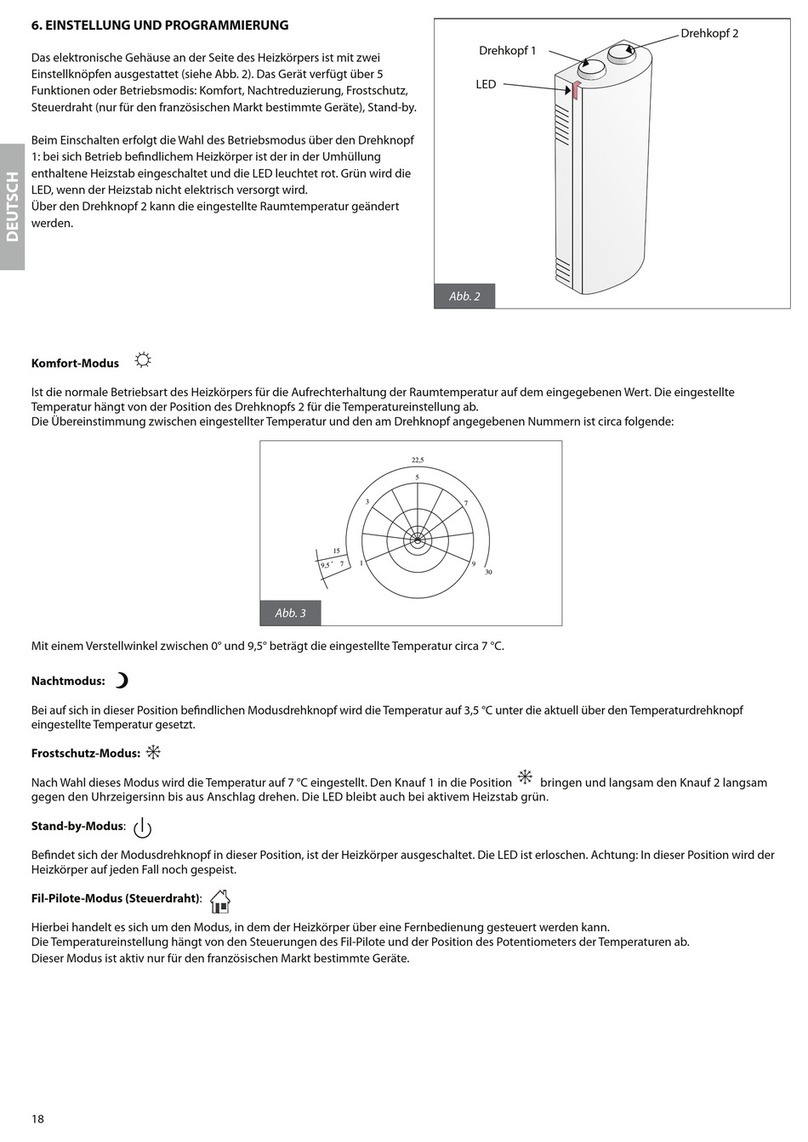
Nova Florida
Nova Florida Simun EA Series Installation and maintenance manual
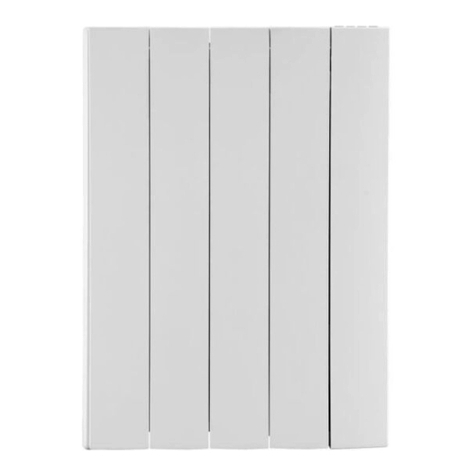
Oceanic
Oceanic OCEAIFC1000W instruction manual
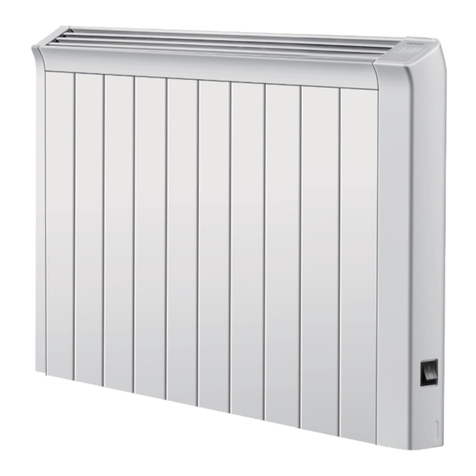
Redwood
Redwood CA900FI Installation & User Manual Instructions
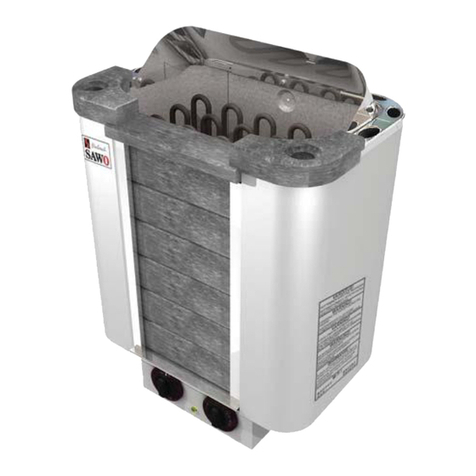
Sawo
Sawo CUMULUS CML-45NB quick start guide
